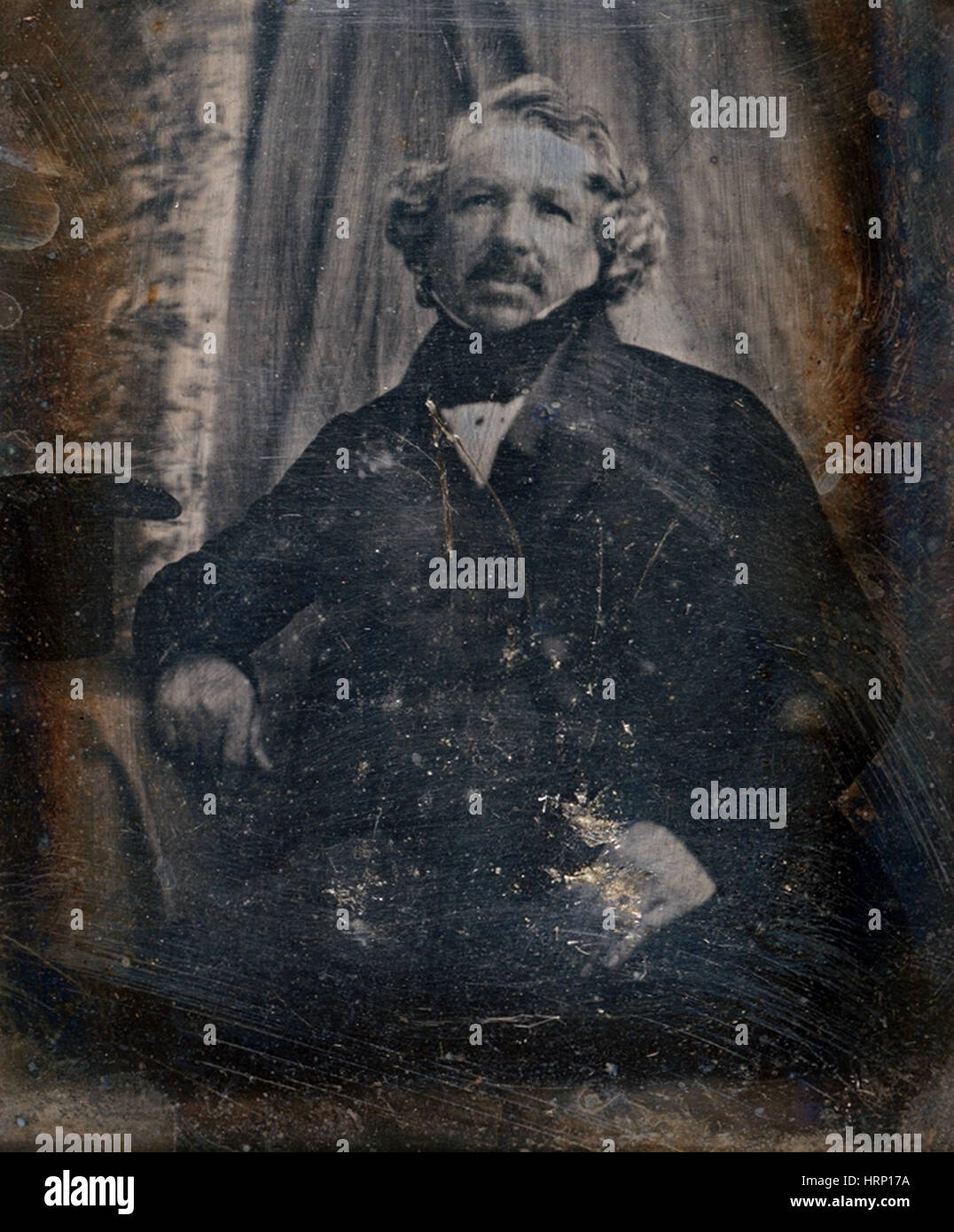Taille du fichier:
31,1 MB (995,9 KB Téléchargement compressé)
Ouvrez votre fichier d’image à la taille réelle à l’aide du logiciel de traitement d’images.
Dimensions:
3000 x 3623 px | 25,4 x 30,7 cm | 10 x 12,1 inches | 300dpi
Informations supplémentaires:
Cette image peut avoir des imperfections car il s’agit d’une image historique ou de reportage.
Daguerre's supposed reluctance to be photographed perhaps explains the relatively small number of daguerreotypes that depict him. Although some evidence suggests that this piece is a self-portrait, other factors make such an attribution uncertain. In any case, this image, despite damage to the plate, remains one of the most engaging portraits of the inventor of photography. The pose, in which he rests one arm on a table, is standard, but the expression and regard remain slightly unfixed as Daguerre, eyes squinted and head cocked, looks directly at the camera. Louis-Jacques-Mand̩ Daguerre (November 18, 1787 - July 10, 1851) was a French artist and physicist and inventor of the daguerreotype process of photography. Although originally employed as a tax officer, Daguerre became a painter of opera scenery, and invented the illuminated diorama. After this he started work with Niepce on chemicals sensitive to light. Niepce died in 1833, but Daguerre continued their work, and unveiled his first camera, the Daguerreotype, in 1839. The Daguerreotype was the Polaroid film of its day: it produced a unique image which could only be duplicated by using a camera to photograph the original. Despite this drawback, millions of Daguerreotypes were produced. Daguerre died in 1851 of a heart attack. Daguerre's name is one of the 72 inscribed on the Eiffel tower. Photographed by Pierre-Ambrose Richebourg, 1844.
